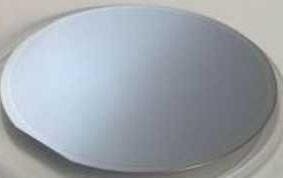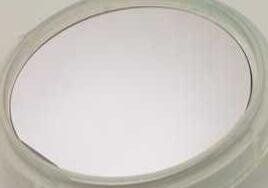Open here for our page navigation
Silicon, Semiconductor, II-VI Substrates and Wafers
Wafer refers to the substrate for manufacturing semiconductor transistors or integrated circuits. Substrate materials include silicon, germanium, GaAs, InP, GaN, etc. Since silicon is the most commonly used, if no crystal material is specified, wafer usually refers to a silicon wafer.
A wafer is the basic raw material for manufacturing semiconductor devices. Very high purity semiconductors are prepared into wafers through crystal pulling and slicing processes. The wafers form a very small circuit structure through a series of semiconductor manufacturing processes, and then are cut, packaged and tested into chips, which are widely used in various electronic equipment. Wafer materials have undergone more than 60 years of technological evolution and industrial development, forming an industry situation in which silicon is the mainstay and new semiconductor materials are complementary.
In the 1950s, germanium (Ge) was the first semiconductor material used and was first used in discrete devices. However, germanium devices have shortcomings in high-temperature resistance and radiation resistance and were gradually replaced by silicon (Si) devices in the late 1960s. Therefore, silicon has become the most widely used semiconductor material.
Since the 1990s, the second generation of semiconductor materials represented by gallium arsenide (GaAs) and indium phosphide (InP) have begun to emerge. GaAs, InP and other materials are suitable for making high-speed, high-frequency, high-power and light-emitting electronic devices.
Silicon Wafer Indium Antimonide Wafer
Gallium Arsenide Wafer Indium Arsenide Wafer
Gallium Antimonide Wafer Indium Phosphide Wafer
Gallium Phosphide Wafer SOS Wafer
Germanium Wafer Zinc Telluride Wafer
and many more..



